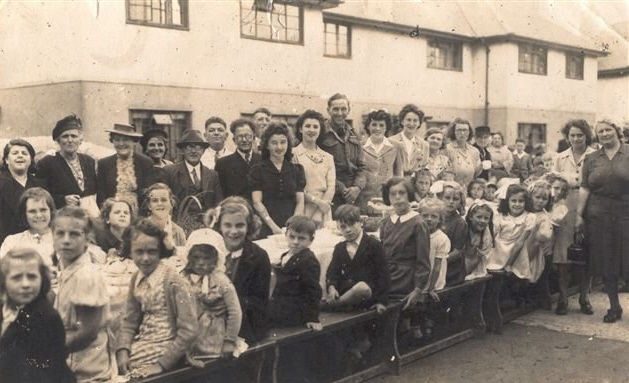May 2021
- Phil Hadley
- May 1, 2021
- 4 min read
The Cornwall Historic Environment Record in its own words “is the comprehensive and definitive record of the historic environment of Cornwall and the Isles of Scilly. From quoits to castles, barrows to blowing houses, palstaves to pollen cores, the HER includes information on all aspects of the past from the earliest traces of human occupation up to the present day.” With its fully zoomable map (which can be found here: https://map.cornwall.gov.uk/website/ccmap/?zoomlevel=1&xcoord=187430&ycoord=64380&wsName=ccmap&layerName= )
it provides a comprehensive amount of information and locations of interest to anyone interested in World War Two in Cornwall (as well as any other period in history). However, as the officials who manage the record readily admit, it is not always accurate, and they are always willing to receive any new and up to date information so they can correct the record to make it as authoritative as possible.
For example, the map shows the pillbox in the middle of the beach at Porthtowan. (Under layers click historical, then click buildings, sites, and monuments - points. Modern sites are shown in orange. Click on the ‘i’ in the orange circle for the entry.) The entry states, “When shifting sand at Porthtowan Beach from the dunes back to the beach, the workers unearthed the foundations of a cement structure identified as the base of a Type 22 pillbox. It is possible that the pillbox itself was never constructed.” It gives Jolyon Sharpe, Countryside Officer, Cornwall Council, as the authority for such a statement.

However, the pillbox was constructed and used during the war and bombed by the Luftwaffe on Wednesday 21st May (See March’s blog for details). The photograph below taken shortly after the war shows it survived its wartime experiences. It also shows a second pillbox built beyond the last property on Beach Road. This would have provided enfilading fire across the beach to support the frontal fire from the central pillbox.

The beach also had a scaffolding barricade across it and a minefield. On Wednesday 15th September at 1715 hours during operations to remove the minefield one officer and two other ranks of the Bomb Disposal Squad were killed.
The casualties are thought to be Serjeant Sydney Herbert Tyler, aged 39, and the husband of Phyllis Georgina Tyler, of South Hayling. He was buried in St Mary’s Churchyard in South Hayling. Also Sapper George Thomas Gode, aged 24, from Custom House, London. He was buried in the East London Cemetery at Plaistow. The officer was Lieutenant Stanley Arthur Barrett, aged 30, the husband of Ella Joan Barratt, of Amersham. He was buried in the Amersham Consecrated Cemetery. They were part of the 7 Bomb Disposal Company, Royal Engineers.
I have communicated with the team managing the HER and they assure me the record has been updated and a new entry made to show the second pillbox. It will eventually show online.
A lot of what is recorded on the HER is the result of a desktop survey of 1946 RAF aerial photographs and misinterpretation has led to a couple of mistakes on the record. When researching for A Place And A Name and Elizabeth’s walk into Constantine to the chapel, I came across on the HER map an entry for a military camp at Treviades. The entry states, “A WW2 military camp consisting of approx 32 rectangular buildings and associated trackways, is visible on air photographs and was plotted as part of the NMP. The camp was spread out over an area approx 420m by 200m, close to the settlement of Treviades.” When I investigated with members of the local history society they assured me there had never been a military camp on the site. It had been a chicken farm and the neatly arranged chicken coops and the walkways between them had been interpreted as a military camp. I guess the clue was in the name “The Egg Farm!”
I have spent some hours walking across Par Beach and examining the remains of the wartime structures and working out the locations of those long since removed. Thus I was intrigued to read of an unusual feature on the HER. It stated, “A sub-rectangular enclosure, 28m by 21m, is visible as a substantial earthwork on aerial photographs and was plotted as part of the NMP. It has an entrance gap in the east. There is no sign of this feature on recent maps or photographs. Its date and function are uncertain but it may be associated with the WW2 defences of Par beach.”

As the photograph shows it has nothing to do with the war but was the remains of the Par Beach Open Air Theatre. The entrance gap in the east was where the stage was and the earthwork was the tiered grass seating. The theatre was very popular in the 1930s, but the outbreak of war and the threat of invasion put paid to it. The site has now been consumed by the modern caravan park. For an examination of the wartime features at Par, take a look at the YouTube video (the Theatre pops up at about the 17-minute mark).
So as you get out and about in the better weather as lockdown restrictions ease, keep your eyes open for the historic environment around you, and if you have information that can update or correct the HER the team there would be delighted to hear from you.




Comments